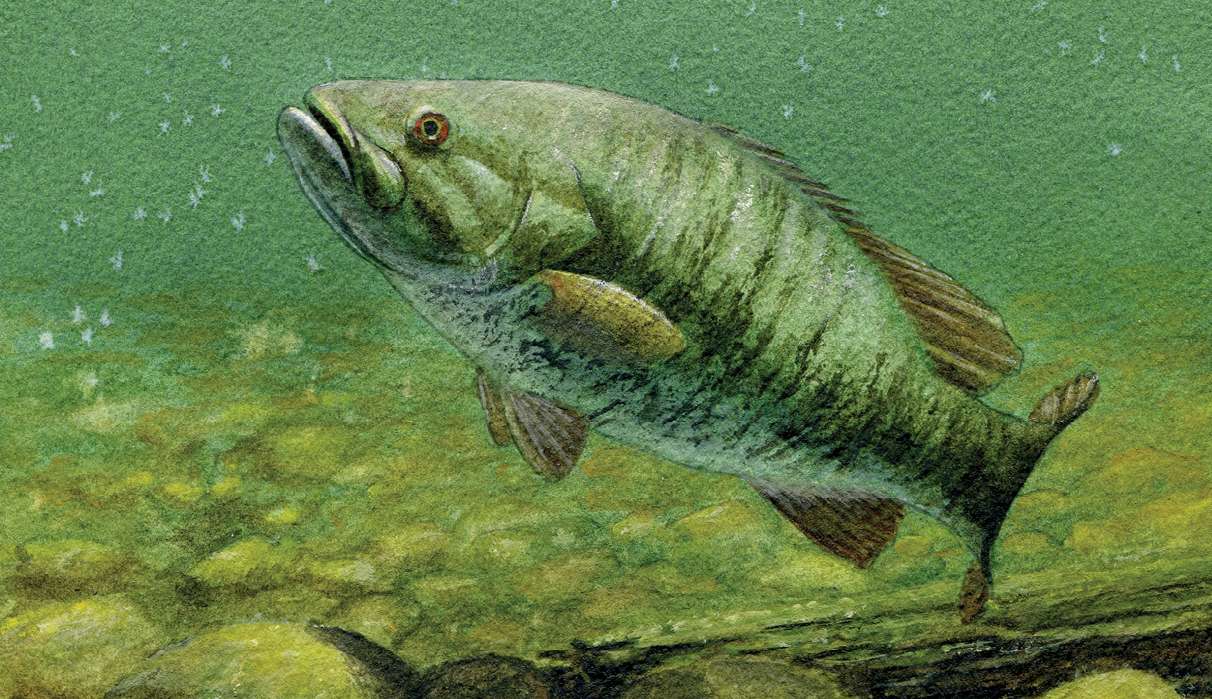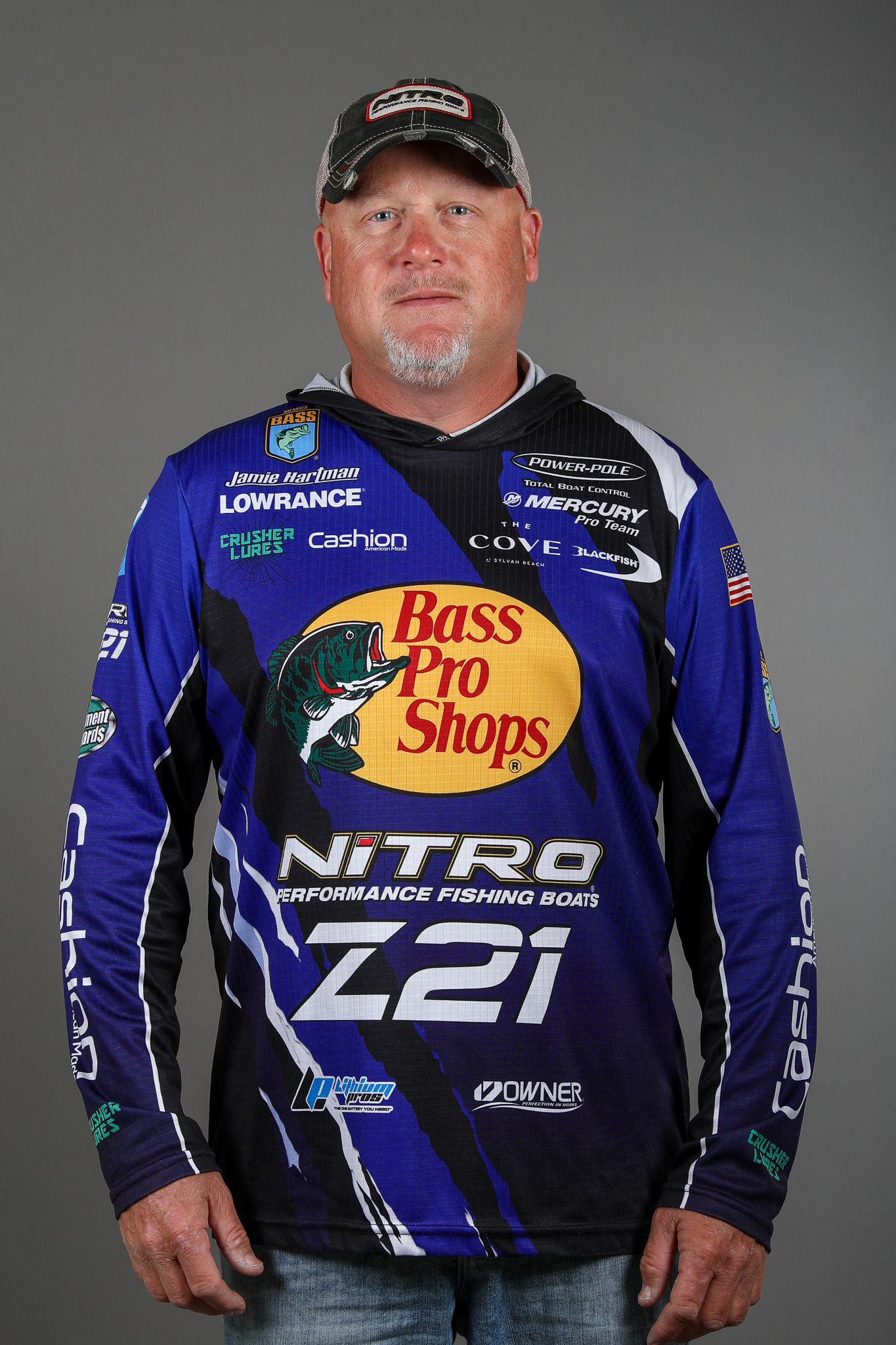
Fall is one of my favorite times to catch smallmouth, because the fish move shallow, and they’re super aggressive. With the days getting shorter and water temperatures starting to drop, they put the feed bag on, and it gets to be a blast.
The fish know they have to feed up for winter, so they will gorge themselves and get extremely fat. This is definitely the time when big smallmouth become more accessible, but you need to approach this scenario strategically.
For one thing, you want to put yourself around the right types of habitat. I’m typically looking for fall smallmouth in 2-8 feet of water where I expect to find them on rocky areas — both clean rock and rock with grass lines.
The fish will run up and down those grass lines pretty good in the fall. I think they push that bait up against the grass, so they’ll relate to these areas consistently.
One of the exciting parts of this seasonal opportunity is visually spotting the fish. They’ll get up there shallow and start cruising around, so if you’re moving slowly, you can spot the smallmouth, throw to them and catch them.
The ideal conditions for this would a sunny and calm day. That allows me to move around and see the fish clearly. If I was not trying to spot them, then a little ripple on the water can be beneficial when I’m just covering water and casting.
During those clear, calm periods, a tube can be really productive. I also do well with the Riot Baits Little Creeper — a compact football jig that I designed for this type of fishing. This jig comes in a 3/8- and 1/2-ounce, and I’ll typically pair it with a little twin tail craw.
This is probably my number one bait for spotting fish and throwing to them. I’ve found that the aggression level of each fish varies, but usually, if you get them to look at the bait, they’ll eat it.
Usually just a short snap so the bait jumps a couple inches off the bottom really fast will really get them to react to it. But I’ve also found that if you’re making long casts and slowly dragging the bait, you seem to get a lot more bites that way.
A couple more baits I like for this sight fishing routine would be a fluke, and unweighted Senko and a black hair jig. Each day is different and a lot of what you throw depends on their mood. That’s why it’s important to keep a variety of baits handy, so you can make several presentations to figure out what the fish want.
On the windy and overcast days, I can usually get those smallmouth to eat a slow-rolled spinnerbait or a jerkbait. Whatever you throw for those fall fish, my advice is to go as slow as you can go. Keep your presence minimal because if the fish don’t get alarmed, you can catch almost every one you see.
Once you’ve spooked, that’s it — they’re going. So keep it slow and methodical, and you’ll enjoy your shots at these fall smallmouth.





